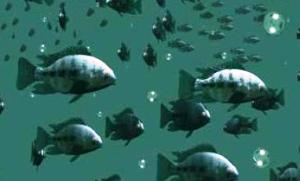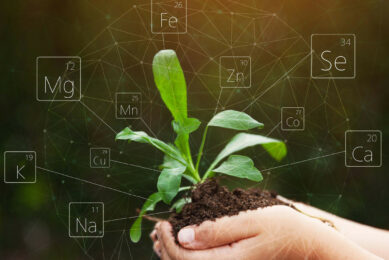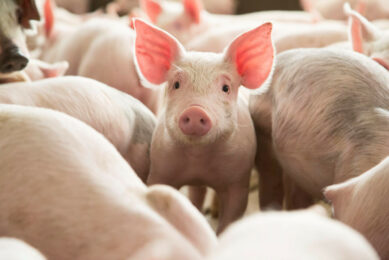The majority of aquaculture in developed countries is represented by intensive farming and this strategy is rapidly increasing globally. For animals in intensive aquaculture, nutritionally complete feeds are the sole source of nutrition including essential minerals. The optimum form and level of protein and energy have been well studied and applied in aquatic animal diets over the past 30 years.
Conversely, research in trace mineral form, requirement and bioavailability is relatively recent. Selenium is an essential trace element that is an integral part of many proteins, with catalytic and structural functions. Currently around 30 selenoproteins have been discovered in mammals with homologues also found in fish. The antioxidant properties of some selenoproteins may be particularly important in primary and secondary prevention of diseases in humans. Similarly, Se also plays an important role in fish growth, development, reproduction, flesh quality, maintenance of fish health, in particular fish immunity. Se deficiency in fish is associated with oxidative stress and causes similar general clinical signs as in various birds and mammals such as reduced disease resistance, increased mortality and muscular dystrophy.
Advantages of organic selenium
The digestibility and bioavailability of trace minerals is of primary importance in their nutritional performance. The digestibility and bioavailability of Se has been assessed using purified diets and inorganic Se. The use of purified diets provides a useful insight into absolute Se requirements but these are not directly relevant to practical situations where there may be many factors affecting Se bioavailability. Se bioavailability and digestibility may be affected by the endogenous Se forms present in different fish feeds, interactions with other nutrients, such as the antagonist effects of copper, chelation effects and the adsorption of elements on organic and inorganic surfaces.
The digestibility of endogenous fishmeal Se is only 47% in comparison to Se added to purified diets where the digestibility of selenomethionine is 91%, selenite 52% and selenocysteine 63%. Selenomethionine is the principal form of Se that occurs naturally in food. Selenomethionine, like methionine, is an essential amino acid as it can not be synthesised by higher animals and humans. The route of selenium into this diet is unique among the minerals in that it is genetically encoded for following the sulphur amino acid pathways. Higher plants, blue-green algae and yeast have in common the ability to form selenomethionine, the selenium analogue of methionine. Incorporated into plant proteins in substitution for methionine, selenium can be transferred from autotrophs in selenomethionine form. While it should be noted that there are a number of other selenocompounds formed by higher plants, yeast and probably by algae, less is known about their metabolism or transfer in the food chain.
John Sweetman has over 25 years experience in aquaculture and has designed, constructed and managed a number of marine finfish hatcheries and farms worldwide. Currently he is technical manager for Alltech Aqua Europe responsible for research and development and the practical application of Alltech Aqua’s natural product ranges in providing modern solutions for improving health and performance in aquatic species.
Only selenomethionine can be incorporated into proteins, thus it is the storage form of Se (mainly in the skeletal muscles). In contrast, sodium selenite (an inorganic mineral salt) can be incorporated into active selenoproteins such as glutathione peroxidase (GSH-Px) but not into selenomethionine as storage protein in liver and muscle. Furthermore, vitamin C is compatible with organic Se but incompatible with selenate or selenite. Vitamin C adversely affects inorganic Se by convertingselenite or selenate into inert metallic Se, which the body cannot use. Methionine and selenomethionine are both essential amino acids as neither is produced by the animal itself.
Yeast cells normally form methionine using sulphur. When fed inorganic- selenium, however, they form selenomethionine instead, by using selenium in the place of sulphur. Located in the same group in the periodic table, selenium’s and sulphur’s chemistry are similar and the yeast cell does not know the difference. Selenomethionine is identical in all ways to methionine except for the substation of sulphur by selenium
Enhanced absorption
One reason for the higher bioavailability of organic compared to inorganic selenium is enhanced absorption. Selenoyeast seems to have nearly the same bioavailability as Se-M. Organic, but not inorganic, Se is deposited in the tissues like muscle, skin and gill due to the non-specific incorporation of selenomethionine. Selenium reserves stored in muscle tissue are mobile reserves available and utilisable by the fish in times of specific oxidative stress conditions.
Recent work by Rider with rainbow trout clearly shows that muscular and whole body tissue Se levels are significantly improved by the incorporation of organic selenium. Besides raising tissue Se *(Figure 1 ), organic Se is effectively incorporated into metabolic enzymes. Organic selenium also has the capability to enrich fillet Se, which would be beneficial to consumers with low Se status. Use of organic selenium will also have advantages environmentally because less selenium will enter into the aquaculture system.
Sebastien Rider is an environmental biology graduate. He worked as a research technician studying the effects of sublethal water quality on amphipod reproduction and population dynamics before completing his MSc in applied marine science where he researched the molecular and physiological effects of PAHs on mussel health. Currently he holds a BBSCR grant to research the effects of zinc and selenium on fish health for his PhD.
Selenium requirement and legal limits
It is well known that Se requirement varies with the form of Se ingested, dietary levels of polyunsaturated fats, vitamin A and E and concentrations of waterborne and sedimentary Se. At present it is accepted that the Se requirement of fish in normal situations is similar to those established for various farm animals, being in the range of 0.3 ppm. However, research suggests that fish can require much higher Se concentrations than the 0.5 ppm level permitted in European commercial feeds, particularly during periods of stress. A variety of guidelines have been proposed in recent years for linking selenium concentrations in the whole body and/or in diet with their effects in fish.
Diverging viewpoints seem to be forming separating groups; government and researchers supporting low Se and other academic researchers proposing the use of high dietary Se in fish diets. Participating professionals at a recent aquaculture seminar titled ‘Elevating Stock Performance and Health Gut Efficiency; The Key Ingredient’, organised by Alltech gave their opinion about current legislation and future issues in the aquaculture business. Almost half of the attendants believed that 1-1.5 ppm total Se is required for most fish species in an aquaculture system. However, the current EU legal limit in fish diets is just 0.5 ppm.
A better understanding of the mechanisms of selenium action will be crucial in determining its potential as a preventive and therapeutic agent against certain disorders and to adjust legally allowed limits in animal feeds in future. The majority of the selenium literature already supports a higher selenium concentration in the diet.
Conclusion
Nutritionally complete diets are necessary in culture situations and, therefore, micronutrients must be supplied in adequate levels in the prepared diets to support optimal growth and production efficiency. This is particularly true in intensive situations where immuno competence and disease resistance can be substantially compromised by deficiencies of various nutrients, especially vitamins and minerals. Dietary supplementation of some of these micronutrients in excess of minimum requirement levels has been shown to significantly enhance the immune response and disease resistance of various animals.
A variety of studies have shown that increased fortification of such nutrients such as vitamins C and E, and Se have shown positive influence on immunity, and resistance and recovery from disease. While the inorganic Se forms are adequate to prevent complete deficiency in most species, Se in its natural form is much better for animals to meet not only their physiological requirement but see improvements in Se absorption, storage and utilisation. <-
References are available on request
*For Figure 1- Results of fish that were supplemented with organic SE compared to no supplement control. Please click on pdf link below.












